Spectacular sailing images: "Johnny FPV" is the star of the drone pilots
Tatjana Pokorny
· 04.10.2022
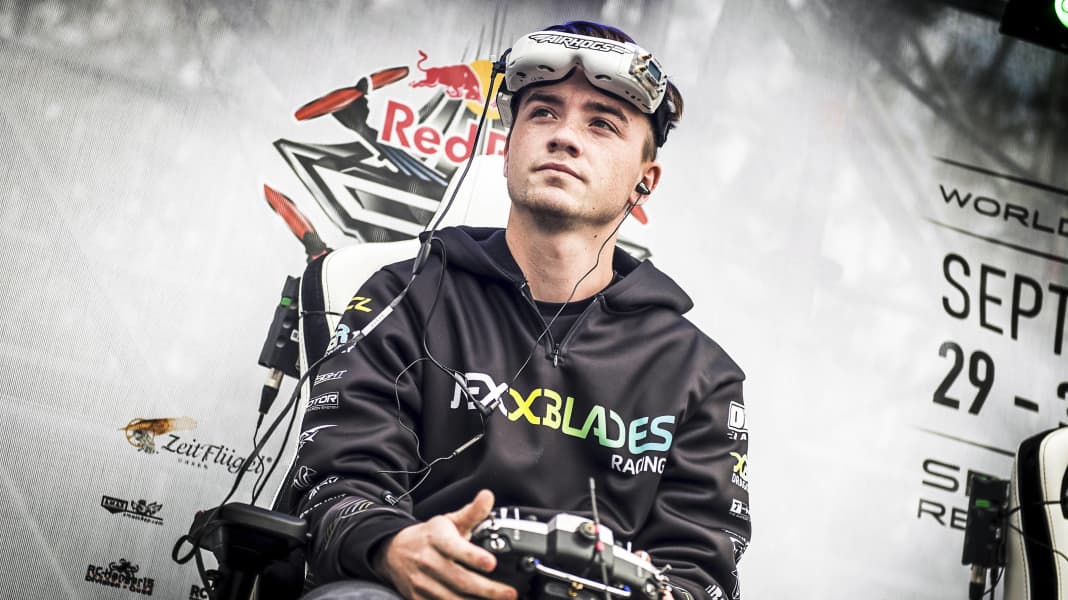
"Johnny FPV is probably the most expensive and best drone pilot in the world. He is the star of the scene," says Eike Schurr. Germany's leading pilot colleague in international regatta sport recognises the extraordinary work of the US artist from Chicago without envy. "Johnny FPV" has actively developed his skills in the sport of drone racing, has been honoured with recordings for the Nascar racing series, Formula 1 and, last year, an international celebrated Porsche clip famous. He now advises major cinema productions and global companies.
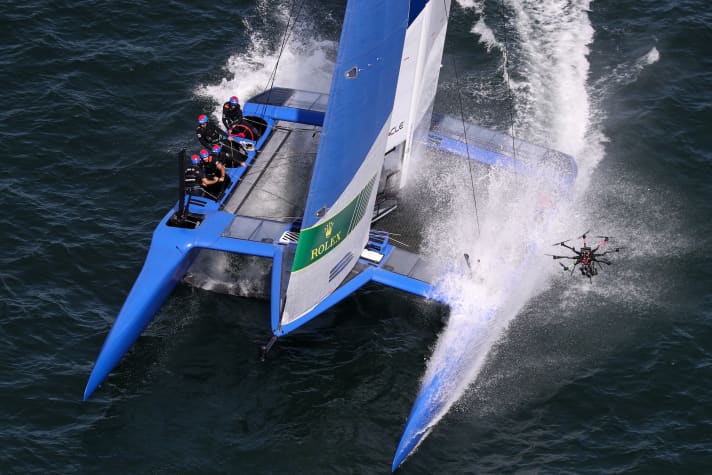
A sky striker with hellishly good flying skills
The SailGP masterminds also noticed this sky-striker and engaged Johnny FPV for a spectacular SailGP clip this summer. Among other things, Johnny FPV flew his racing drone under the foiling F50 catamarans. The American thus created unprecedented sailing sport perspectives. Johnny FPV's work was inspired by drone artists such as Charpu, Skitzo and Mr Steele.
"Johnny FPV was one of the first to dare to fly over a regatta fleet with racing drones," says Eike Schurr, who has been working as a drone pilot for international regatta series such as the 52 Super Series, the SSL Gold Cup, Kieler Woche and the Superyacht Rolex Maxi Cup since 2016. Eike Schurr, alias blondsign, also operated a fast racing drone for the first time last week at the Scarlino regatta of the 52 Super Series.
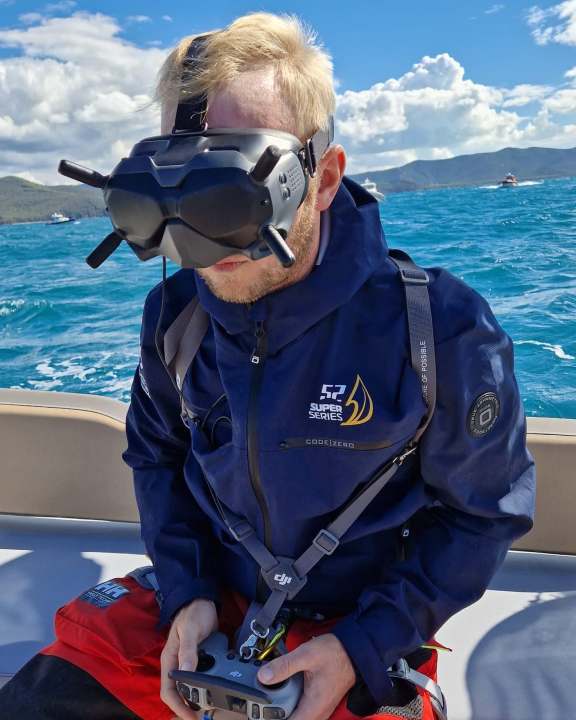
Racing drones revolutionise the world of regatta imagery
One disadvantage of racing drones, which are not yet widely used in the film industry, is their battery life. Most can only stay in the air for ten minutes, other models for up to 20 minutes, before the batteries need to be replaced. The weight of the batteries stands in the way of longer running times. The solution to this problem is likely to be a matter of time. The advantages of racing drones are obvious, as Schurr explains: "Racing drones enable new perspectives through different angles of view and are very fast. When Johnny FPV works in Formula 1, he has to be able to keep up with speeds of 300 kilometres per hour ..."
Schurr himself, who has already been active as a drone pilot at regattas in 17 countries and was the first FPV (editor: FPV is short for "First Person View") for the 52 Super Series, initially carried out test runs on land with the racing drone in Scarlino last week. "What we had there was a DJI FPV, a finished device that can accelerate from zero to 100 kilometres per hour in two seconds. The top speed is 140 kilometres per hour. So far, very few people have operated it off and on the water. Johnny FPV would probably smile about it anyway."
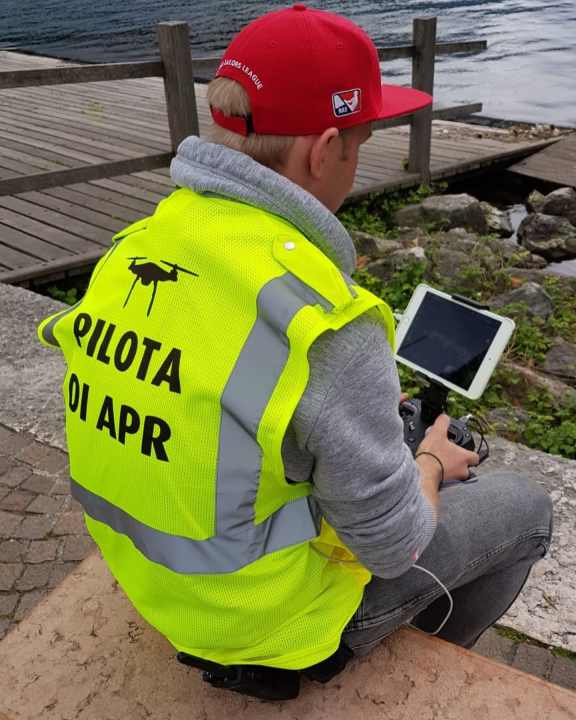
Like an eagle above the fleet: circle, lurk, go!
Even experienced drone pilots need to learn how to handle the high-speed racing projectiles: "One of the dangers is: How do you catch the thing? It's all a question of perfect timing. We managed that well," reports the 33-year-old from Bremen after the premiere in Italy. With a normal drone, he explains another difference, you can stay in the air and wait. "With the racing drone, you circle like an eagle above the fleet in hovering mode at 60, 70 kilometres per hour, wait for decisive scenes and then go in."
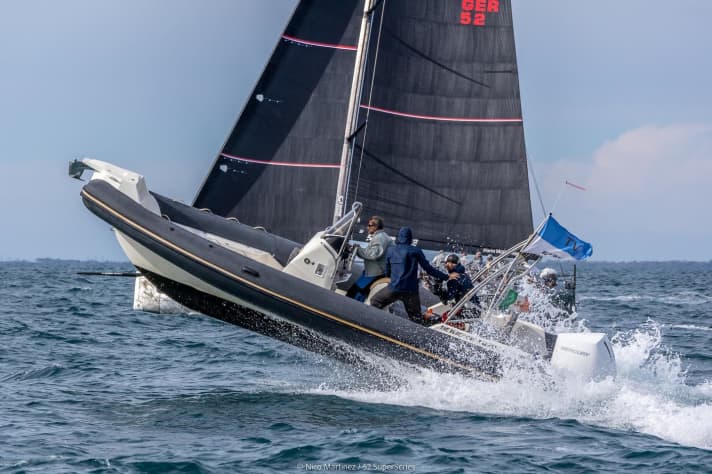
The working perspective is created by the goggles worn by the pilot. Schurr explains: "This allows you to assume the pilot's position with the corresponding view. Important data such as the speed or battery charge status is shown on the display. You also need an assistant to give you additional information about what's happening on the course, because as a pilot I can't see what's happening behind me. The assistant gives you an assessment of what's going on around you, just like a strategist."
Racing drone clip by Eike Schurr for the 52 Super Series
The approach is made from the circling phase when scenes worth filming develop on the course. "When you think there's an important moment, you start the approach. You don't have much time for this with the racing drone. With our current model, a total of ten minutes." For the coming year, it is not only the 52 Super Series that is considering switching to newer racing drones with longer running times.
Very few people have the luxury of a Johnny FPV, who has a dozen or more drones in his luggage for every shoot and can operate with large budgets. Filming with drones is expensive: a simple racing drone is available from around €2,000, top models cost €15,000 or significantly more - depending on the setup and individual equipment.
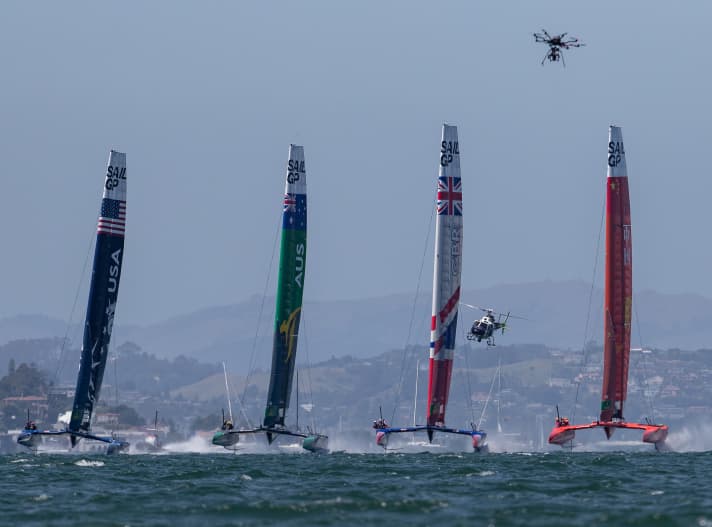
Johnny FPV: "This is what I live for"
Drone filming remains a challenge even for the best, as Johnny FPV reported after his SailGP stint in the summer: "Flying alongside the SailGP boats speeding across the water even at 100 kilometres per hour was a huge challenge. There's so much that can go wrong when you're operating at sea in strong winds and looking for your damn dinghy after you've flown out a mile in any direction. I'm thrilled with how well everything came together in the end. That's what I live for." For fans, too, the work of drone pilots always means enjoyment and profit.

